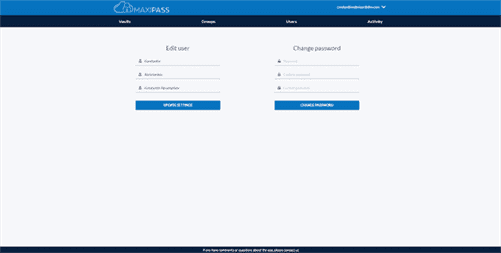The deeper the layer resides inside the Onion, the fewer dependencies it has. The presentation layer is our final layer that presents the data to the front-end user on every HTTP request. Now in the ICustomServices folder, we will create the ICustomServices Interface, this interface holds the signature of the method. We will implement these methods in the customs service code of the ICustomServices Interface given below. But here we need to add the project reference of the Domain layer in the repository layer.
- It not only enhances the flavor of the food but also provides medicinal effects to the consumers.
- Onions are multicellular plant organisms, which basically means that they are made up of many cells that are uniform in size and shape.
- However, we are going to do something different from what you are normally used to when creating Web APIs.
- Instead of building a highly decoupled structure, we often end up with several layers that are depending on each other.
- This process produces glucose, which is then converted to starch granules, and these granules go to the onion bulb (which are essentially modified leaves) for storage, and are later processed as energy.
- So, you have the option of using your preferred light microscope, or whatever you have on hand.
Low coupling in which one module interacts with another module and does not need to be concerned with the other module’s internals. All the internal layers need not be concerned about internal implementation of external layers. Application is divided into layers where each layer has a set of responsibilities and addresses separate concerns. Each layer acts as modules/package/namespace within the application. And finally, we saw how our Presentation layer is implemented as a separate project by decoupling the controllers from the main Web application. Then, we explained how we can connect all of the layers using an ASP.NET Core Web API.
What are the parts of an onion cell?
Therefore, it is important to have normal senescence of onion leaves to ensure translocation of inhibitors to the bulb to improve storage life and reduce early sprouting. The change from rest to dormancy is gradual and highly dependent on the cultivar. Dormant bulbs will not sprout at optimal storage temperatures. Once dormancy has passed, root emergence occurs, followed by leaf shoots at favorable temperatures and moisture conditions. This less perishable quality of onions makes it easy for transportation to different parts and is used in many parts of the world. These are also easy to grow and could be grown in a variety of soils and climates.
The ideal soil site is well-drained and has a nearly neutral pH (6.6-6.8). Direct seeding requires that each seed be planted at the same depth below the soil surface in order for it to germinate and grow uniformly. Onion has significance in the religious ritual for Egyptians.
Onion (Allium spp.)
But this is a lot of manual work, and it is error-prone. We are creating a project called Presentation and giving it a reference to the Microsoft.AspNetCore.Mvc.Core NuGet package so that it has access to the ControllerBase class. We are using a Web API built with ASP.NET Core to create a set of RESTful API endpoints for modifying the domain entities and allowing consumers to get back the data. With this approach, we are being very explicit about what the higher layers of the Onion can and can not do. It is easy to miss here that the Services.Abstractions project does not have a reference to the Domain project.
Your solution/project structure is not dictated by the onion architecture. If you had a very simple application, you could have everything in the same project, even the same folder – and still have a perfect onion architecture. Or you could have a 100 projects and still keep the onion architecture. There’s nothing special happening here, other than a stricter separation between layers. In fact, I’d say that the way Onion does it is probably the most common way that business domain software architectures are expressed nowadays.
Polyphenols in Agricultural Byproducts and Food Waste
As you can see, we mark the service implementations with the internal keyword, which means they will not be publicly available outside of the Services project. These exceptions will be handled by the higher layers of our architecture. We are going to use them in a global exception handler that will return the proper HTTP status code based on the type of exception that was thrown. The entities defined in the Domain layer are going to capture the information that is important for describing the problem domain.

In the Onion Architecture, the only thing allowed access to the database are the Domain Entities. You will note that most of the interaction with this architecture occurs at the Service Layer boundary (the outer ring). Plant cells are static within the plant (they do not move from place to place) and are surrounded by a cell wall. Adjacent cells are “glued” together by a pectin-rich layer called the middle lamella.
Setting Up EF Core on the Persistence Project
Their strong odor — actually a defense mechanism — and unique structure belie a complex internal makeup, composed of cell walls, cytoplasm, and the vacuole. No direction is provided by the Onion Architecture guidelines about how the layers should be implemented. The architect should decide the implementation and is free to choose whatever level of class, package, module, or whatever else is required to add in the solution. Onion Architecture solved these problem by defining layers from the core to the Infrastructure. It applies the fundamental rule by moving all coupling towards the center.

Domain objects are also flat as they should be, without any heavy code or dependencies. Most of the traditional architectures raise fundamental issues of tight coupling and separation of concerns. Onion Architecture was introduced by Jeffrey Palermo to provide a better way to build applications in perspective of better testability, maintainability, and dependability. Onion Architecture addresses the challenges faced with 3-tier and n-tier architectures, and to provide a solution for common problems.
Cell Wall Composition of the Six Kingdoms
Under this folder, add a new one and name it ProductFeatures. Tip #2 – While running the application, you would see that it navigated to ../weatherforecast by default. In the WebApi Project, Properties drill down, you can find a launchsettings.json file. This file holds all the configurations required for the app launch. Thus, the swagger will open up by default every time you run the application. We will have to register Swager within the application service container.

There is nothing at all required of you from a project/folder perspective to establish an Onion architecture, though the layers in the model do suggest natural places to put project/API boundaries. The latest in the series of food chemistry graphics looks at the chemistry of onions – specifically, what causes their odour, and why chopping onions will make your eyes water. Cutting off the apical shoot cancels out the effect of apical dominance and gives a chance for lateral growth. However, you’ll rarely need to worry about having to cut the shoot in onion plants. The bulbs are harvested in the first year before the terminal bud starts bolting. When we say terminal buds, we mean those at the end of a vertically growing end.
Controlled release of diclofenac sodium through acrylamide grafted hydroxyethyl cellulose and sodium alginate
Planting onions in raised beds improve drainage and prevents damping-off diseases. Planting sets and transplants can be advantageous because they are ready to harvest one to two months earlier than onions planted directly. Planting in sets and onion structure transplanting is much more expensive than direct seeding. For instance, onion is a low calories substance and can suit the need of a person who is dieting. It is easy for them to take advantage from the low-calorie content of sweet raw onions.

